|
[1]
|
World Health Organization, World Health Statistics 2019, 2019. Available from: https://apps.who.int/iris/bitstream/handle/10665/324835/9789241565707-eng.pdf.
|
|
[2]
|
World Health Organization, World Health Statistics 2020, 2020. Available from: https://www.who.int/data/gho/data/themes/tuberculosis.
|
|
[3]
|
World Health Organization, World Health Statistics 2007, 2007. Available from: https://www.who.int/docs/default-source/gho-documents/world-health-statistic-reports/whostat2007.pdf.
|
|
[4]
|
World Health Organization, World Health Statistics 2021, 2021. Available from: https://apps.who.int/iris/bitstream/handle/10665/342703/9789240027053-eng.pdf.
|
|
[5]
|
World Health Organization, WHO Coronavirus (COVID-19) Dashboard, 2021. Available from: https://covid19.who.int/.
|
|
[6]
|
A. d'Onofrio, Stability properties of pulse vaccination strategy in SEIR epidemic model, Math. Biosci., 179 (2002), 57–72. https://doi.org/10.1016/s0025-5564(02)00095-0 doi: 10.1016/s0025-5564(02)00095-0

|
|
[7]
|
G. Huang, Y. Takeuchi, W. Ma, D. Wei, Global stability for delay SIR and SEIR epidemic models with nonlinear incidence rate, Bull. Math. Biol., 72 (2010), 1192–1207. https://doi.org/10.1007/s11538-009-9487-6 doi: 10.1007/s11538-009-9487-6

|
|
[8]
|
X. Luo, N. Shao, J. Cheng, W. Chen, Modeling the trend of outbreak of COVID–19 in the diamond princess cruise ship based on a time-delay dynamic system, Math. Model. Appl., 9 (2020), 15–22. https://doi.org/10.3969/j.issn.2095-3070.2020.01.004 doi: 10.3969/j.issn.2095-3070.2020.01.004

|
|
[9]
|
Y. Muroya, Y. Enatsu, T. Kuniya, Global stability for a multi-group SIRS epidemic model with varying population sizes, Nonlinear Anal. Real World Appl., 14 (2013), 1693–1704. https://doi.org/10.1016/j.nonrwa.2012.11.005 doi: 10.1016/j.nonrwa.2012.11.005

|
|
[10]
|
Z. Sun, Analysis for the process of preventing and controlling plague, Math. Model. Appl., 9 (2020), 9–14. https://doi.org/10.3969/j.issn.2095-3070.2020.01.003 doi: 10.3969/j.issn.2095-3070.2020.01.003

|
|
[11]
|
R. Xu, Z. Ma, Z. Wang, Global stability of a delayed SIRS epidemic model with saturation incidence and temporary immunity, Comput. Math. Appl., 59 (2010), 3211–3221. https://doi.org/10.1016/j.camwa.2010.03.009 doi: 10.1016/j.camwa.2010.03.009

|
|
[12]
|
F. Zhang, J. Li, J. Li, Epidemic characteristics of two classic SIS models with disease-induced death, J. Theor. Biol., 424 (2017), 73–83. https://doi.org/10.1016/j.jtbi.2017.04.029 doi: 10.1016/j.jtbi.2017.04.029

|
|
[13]
|
J. Deng, S. Tang, H. Shu, Joint impacts of media, vaccination and treatment on an epidemic Filippov model with application to COVID-19, J. Theor. Biol., 523 (2021), 110698. https://doi.org/10.1016/j.jtbi.2021.110698 doi: 10.1016/j.jtbi.2021.110698

|
|
[14]
|
A. Kumar, P. K. Srivastava, Y. Takeuchi, Modeling the role of information and limited optimal treatment on disease prevalence, J. Theor. Biol., 414 (2017), 103–119. https://doi.org/10.1016/j.jtbi.2016.11.016 doi: 10.1016/j.jtbi.2016.11.016

|
|
[15]
|
W. Zhou, A. Wang, F. Xia, Y. Xiao, S. Tang, Effects of media reporting on mitigating spread of COVID-19 in the early phase of the outbreak, Math. Biosci. Eng., 17 (2020), 2693–2707. https://doi.org/10.3934/mbe.2020147 doi: 10.3934/mbe.2020147

|
|
[16]
|
S. Funk, E. Gilad, V. Jansen, Endemic disease, awareness, and local behavioural response, J. Theor. Biol., 264 (2010), 501–509. https://doi.org/10.1016/j.jtbi.2010.02.032 doi: 10.1016/j.jtbi.2010.02.032

|
|
[17]
|
S. Funk, E. Gilad, C. Watkins, V. A. Jansen, The spread of awareness and its impact on epidemic outbreaks, Proc. Natl. Acad. Sci. U.S.A., 106 (2009), 6872–6877. https://doi.org/10.1073/pnas.0810762106 doi: 10.1073/pnas.0810762106

|
|
[18]
|
R. Liu, J. Wu, H. Zhu, Media/psychological impact on multiple outbreaks of emerging infectious diseases, Comput. Math. Methods Med., 8 (2007), 153–164. https://doi.org/10.1080/17486700701425870 doi: 10.1080/17486700701425870

|
|
[19]
|
J. A. Cui, X. Tao, H. Zhu, An SIS infection model incorporating media coverage, Rocky Mt. J. Math., 38 (2008), 1323–1334. https://doi.org/10.1216/RMJ-2008-38-5-1323 doi: 10.1216/RMJ-2008-38-5-1323

|
|
[20]
|
J. Cui, Y. Sun, H. Zhu, The impact of media on the control of infectious diseases, J. Dyn. Differ. Equations, 20 (2008), 31–53. https://doi.org/10.1007/s10884-007-9075-0 doi: 10.1007/s10884-007-9075-0

|
|
[21]
|
H. Joshi, S. Lenhart, K. Albright, K. Gipson, Modeling the effect of information campaigns on the HIV epidemic in Uganda, Math. Biosci. Eng., 5 (2008), 757–770. https://doi.org/10.3934/mbe.2008.5.757 doi: 10.3934/mbe.2008.5.757

|
|
[22]
|
Y. Liu, J. A. Cui, The impact of media coverage on the dynamics of infectious disease, Int. J. Biomath., 1 (2008), 65–74. https://doi.org/10.1142/S1793524508000023 doi: 10.1142/S1793524508000023

|
|
[23]
|
A. Misra, A. Sharma, J. Shukla, Modeling and analysis of effects of awareness programs by media on the spread of infectious diseases, Math. Comput. Modell., 53 (2011), 1221–1228. https://doi.org/10.1016/j.mcm.2010.12.005 doi: 10.1016/j.mcm.2010.12.005

|
|
[24]
|
A. Misra, A. Sharma, V. Singh, Effect of awareness programs in controlling the prevalence of an epidemic with time delay, J. Biol. Syst., 19 (2011), 389–402. https://doi.org/10.1142/S0218339011004020 doi: 10.1142/S0218339011004020

|
|
[25]
|
Y. Xiao, S. Tang, J. Wu, Media impact switching surface during an infectious disease outbreak, Sci. Rep., 5 (2015), 1–9. https://doi.org/10.1038/srep07838 doi: 10.1038/srep07838

|
|
[26]
|
Y. Xiao, T. Zhao, S. Tang, Dynamics of an infectious diseases with media/psychology induced non-smooth incidence, Math. Biosci. Eng., 10 (2013), 445–461. https://doi.org/10.3934/mbe.2013.10.445 doi: 10.3934/mbe.2013.10.445

|
|
[27]
|
A. L. Krause, L. Kurowski, K. Yawar, R. A. V. Gorder, Stochastic epidemic metapopulation models on networks: SIS dynamics and control strategies, J. Theor. Biol., 449 (2018), 35–52. https://doi.org/10.1016/j.jtbi.2018.04.023 doi: 10.1016/j.jtbi.2018.04.023

|
|
[28]
|
G. Lan, S. Yuan, B. Song, The impact of hospital resources and environmental perturbations to the dynamics of SIRS model, J. Franklin Inst., 358 (2021), 2405–2433. https://doi.org/10.1016/j.jfranklin.2021.01.015 doi: 10.1016/j.jfranklin.2021.01.015

|
|
[29]
|
Q. Liu, D. Jiang, T. Hayat, A. Alsaedi, B. Ahmad, A stochastic SIRS epidemic model with logistic growth and general nonlinear incidence rate, Phys. A, 551 (2020), 124152. https://doi.org/10.1016/j.physa.2020.124152 doi: 10.1016/j.physa.2020.124152

|
|
[30]
|
S. Yan, Y. Zhang, J. Ma, S. Yuan, An edge-based SIR model for sexually transmitted diseases on the contact network, J. Theor. Biol., 439 (2018), 216–225. https://doi.org/10.1016/j.jtbi.2017.12.003 doi: 10.1016/j.jtbi.2017.12.003

|
|
[31]
|
Y. Cai, J. Jiao, Z. Gui, Y. Liu, W. Wang, Environmental variability in a stochastic epidemic model, Appl. Math. Comput., 329 (2018), 210–226. https://doi.org/10.1016/j.amc.2018.02.009 doi: 10.1016/j.amc.2018.02.009

|
|
[32]
|
N. Du, N. Nhu, Permanence and extinction for the stochastic SIR epidemic model, J. Differ. Equations, 269 (2020), 9619–9652. https://doi.org/10.1016/j.jde.2020.06.049 doi: 10.1016/j.jde.2020.06.049

|
|
[33]
|
T. Hou, G. Lan, S. Yuan, T. Zhang, Threshold dynamics of a stochastic SIHR epidemic model of COVID-19 with general population-size dependent contact rate, Math. Biosci. Eng., 19 (2022), 4217–4236. https://doi.org/10.3934/mbe.2022195 doi: 10.3934/mbe.2022195

|
|
[34]
|
D. Zhao, T. Zhang, S. Yuan, The threshold of a stochastic SIVS epidemic model with nonlinear saturated incidence, Phys. A, 443 (2016), 372–379. https://doi.org/10.1016/j.physa.2015.09.092 doi: 10.1016/j.physa.2015.09.092

|
|
[35]
|
Q. Liu, D. Jiang, N. Shi, T. Hayat, A. Alsaedi, The threshold of a stochastic SIS epidemic model with imperfect vaccination, Math. Comput. Simul., 144 (2018), 78–90. https://doi.org/10.1016/j.matcom.2017.06.004 doi: 10.1016/j.matcom.2017.06.004

|
|
[36]
|
Y. Zhou, W. Zhang, S. Yuan, Survival and stationary distribution of a SIR epidemic model with stochastic perturbations, Appl. Math. Comput., 244 (2014), 118–131. https://doi.org/10.1016/j.amc.2014.06.100 doi: 10.1016/j.amc.2014.06.100

|
|
[37]
|
Y. Zhou, S. Yuan, D. Zhao, Threshold behavior of a stochastic SIS model with Lévy jumps, Appl. Math. Comput., 275 (2016), 255–267. https://doi.org/10.1016/j.amc.2015.11.077 doi: 10.1016/j.amc.2015.11.077

|
|
[38]
|
Y. Zhao, L. Zhang, S. Yuan, The effect of media coverage on threshold dynamics for a stochastic SIS epidemic model, Phys. A, 512 (2018), 248–260. https://doi.org/10.1016/j.physa.2018.08.113 doi: 10.1016/j.physa.2018.08.113

|
|
[39]
|
X. Jin, J. Jia, Qualitative study of a stochastic SIRS epidemic model with information intervention, Phys. A, 547 (2020), 123866. https://doi.org/10.1016/j.physa.2019.123866 doi: 10.1016/j.physa.2019.123866

|
|
[40]
|
J. Yu, D. Jiang, N. Shi, Global stability of two-group SIR model with random perturbation, J. Math. Anal. Appl., 360 (2009), 235–244. https://doi.org/10.1016/j.jmaa.2009.06.050 doi: 10.1016/j.jmaa.2009.06.050

|
|
[41]
|
X. Mao, Stochastic Differential Equations and Applications, Horwood Publishing, Chichester, UK, 2007. https://doi.org/10.1007/978-3-642-11079-5_2
|
|
[42]
|
Q. Yan, Y. Tang, D. Yan, J. Wang, L. Yang, X. Yang, et al., Impact of media reports on the early spread of COVID-19 epidemic, J. Theor. Biol., 502 (2020), 110385. https://doi.org/10.1016/j.jtbi.2020.110385 doi: 10.1016/j.jtbi.2020.110385

|











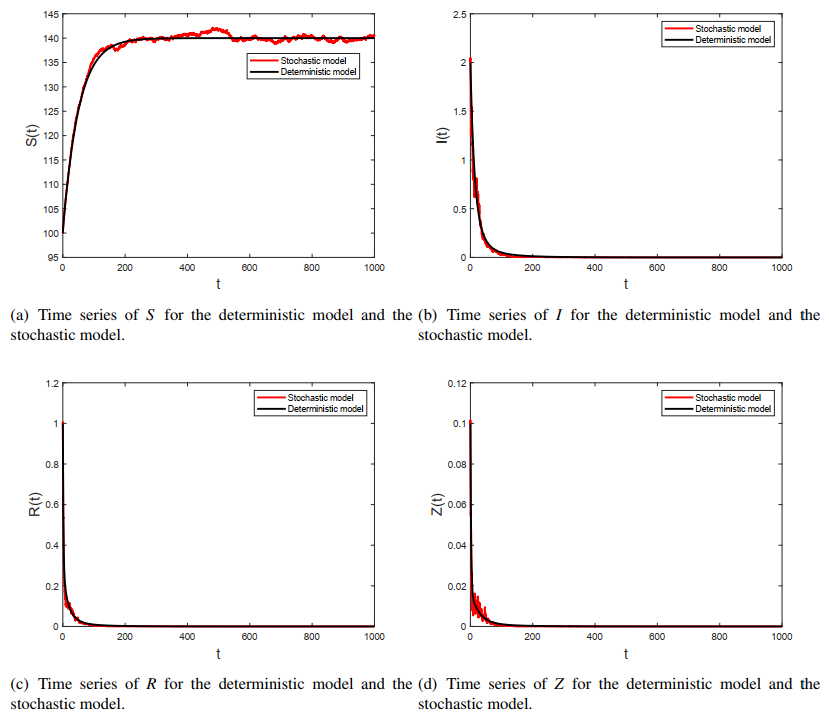
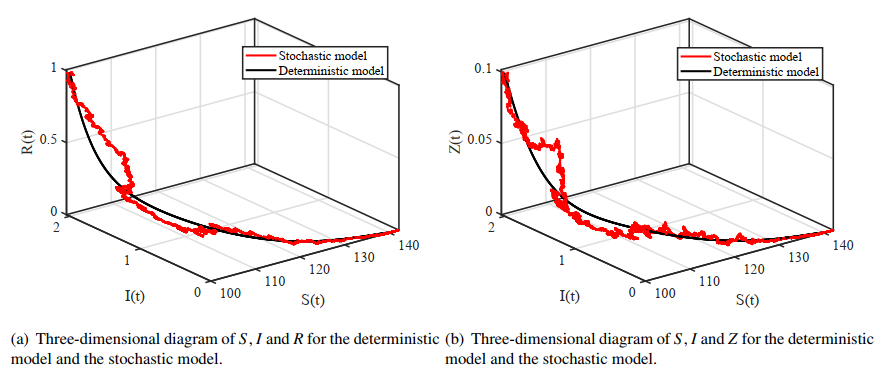
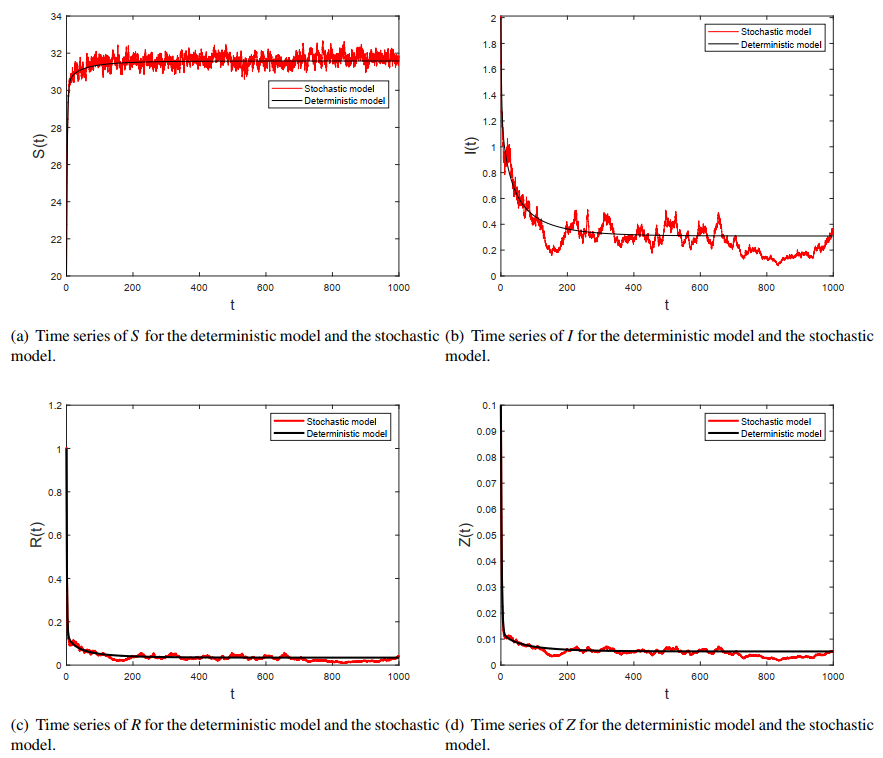
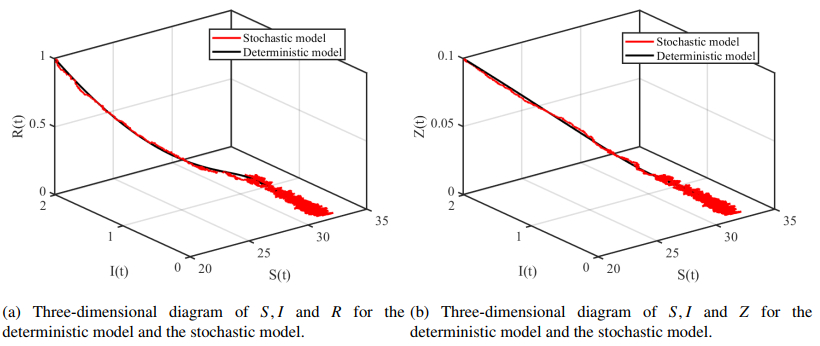
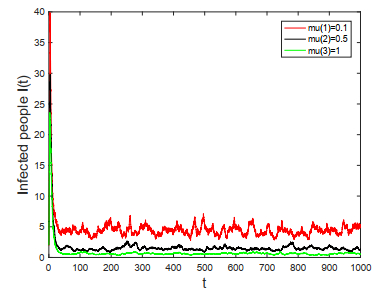


 DownLoad:
DownLoad: